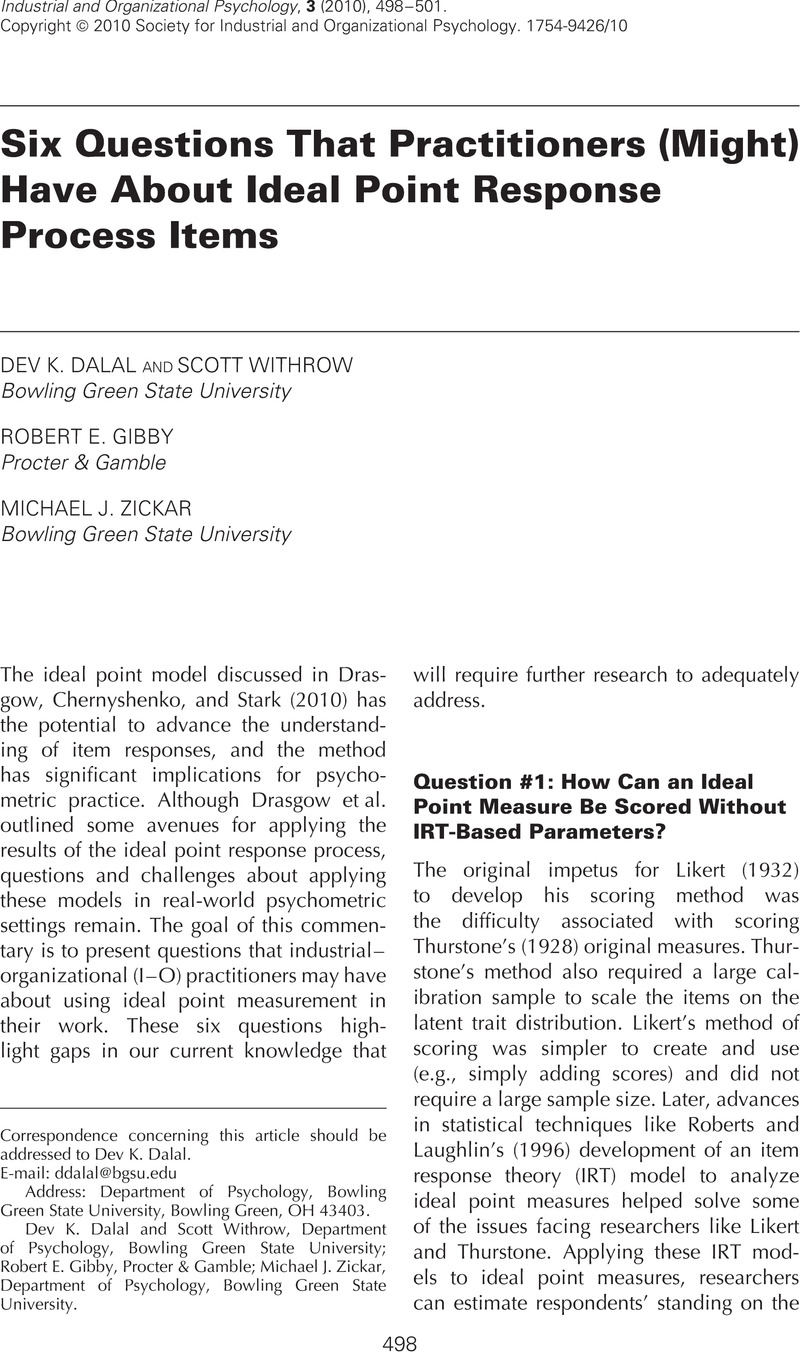Crossref Citations
This article has been cited by the following publications. This list is generated based on data provided by Crossref.
Drasgow, Fritz
Chernyshenko, Oleksandr S.
and
Stark, Stephen
2010.
Improving the Measurement of Psychological Variables: Ideal Point Models Rock!.
Industrial and Organizational Psychology,
Vol. 3,
Issue. 4,
p.
515.
Park, DongGun
Choi, MyungOk
Lee, WonSun
Lee, HyeMin
and
Lee, JunHee
2012.
Comparison between dominance process model and ideal point response model for personality assesment.
Korean Journal of Industrial and Organizational Psychology,
Vol. 25,
Issue. 2,
p.
421.
Polak, Marike
de Rooij, Mark
and
Heiser, Willem J.
2012.
A Model-Free Diagnostic for Single-Peakedness of Item Responses Using Ordered Conditional Means.
Multivariate Behavioral Research,
Vol. 47,
Issue. 5,
p.
743.
강태훈
and
Min Ah, Oh
2014.
An exploratory research on the applicability of the ideal point model to an internet game addition scale for adolescents.
The Korean Journal of Educational Methodology Studies,
Vol. 26,
Issue. 2,
p.
201.
Dalal, Dev K.
Carter, Nathan T.
and
Lake, Christopher J.
2014.
Middle Response Scale Options are Inappropriate for Ideal Point Scales.
Journal of Business and Psychology,
Vol. 29,
Issue. 3,
p.
463.
Dalal, Dev K.
and
Carter, Nathan T.
2015.
Consequences of Ignoring Ideal Point Items for Applied Decisions and Criterion-Related Validity Estimates.
Journal of Business and Psychology,
Vol. 30,
Issue. 3,
p.
483.



